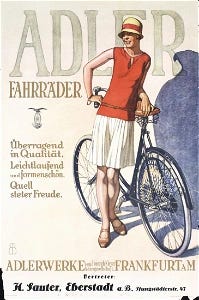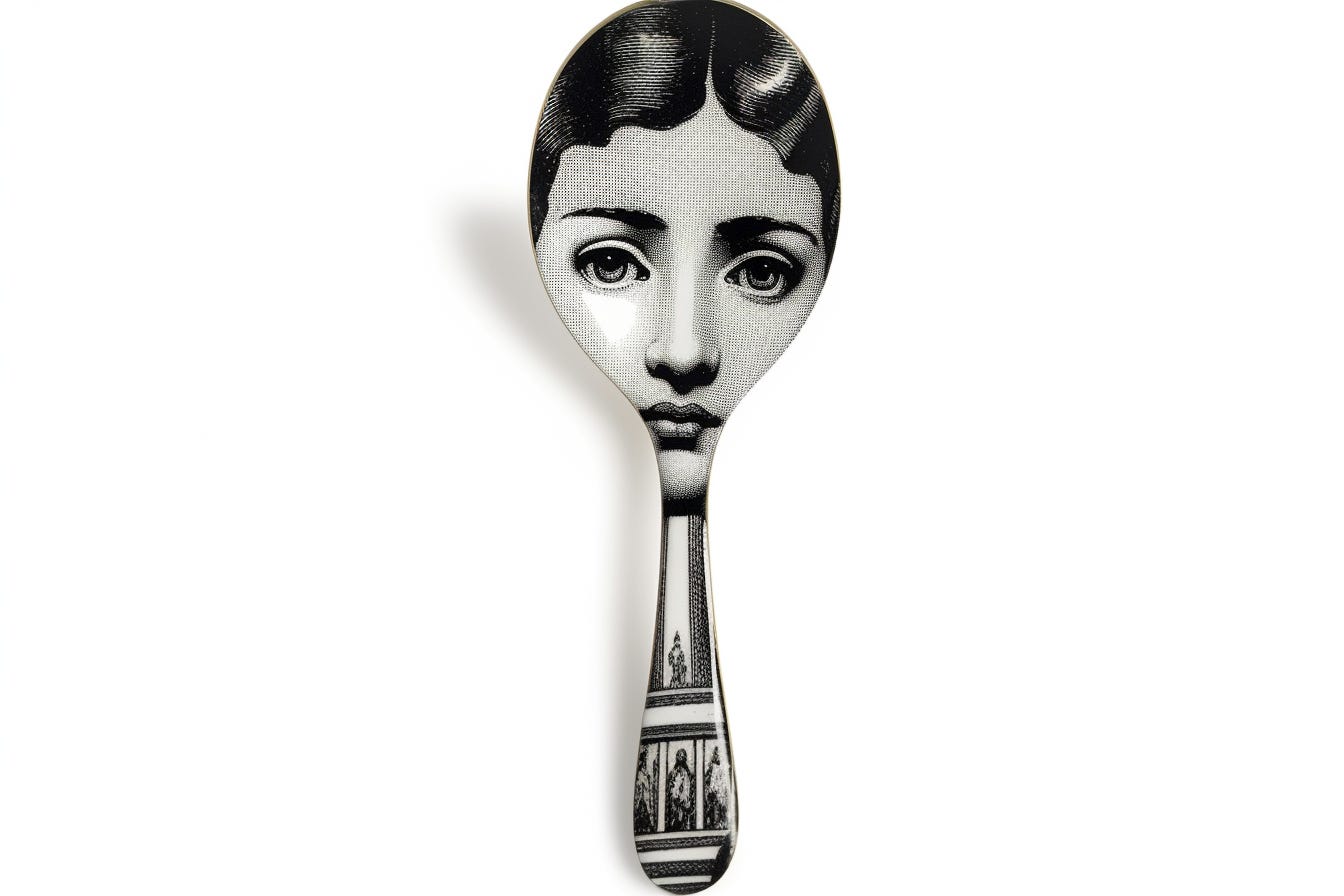This week’s Design Lobster is exploring design that straddles the machine-made and hand-crafted. We’re asking the age-old question of whether designers should code and exploring how the famous Bauhaus ‘Cesca’ chair straddled industry and craft 🛠️
This week I’ve added some links out to writing elsewhere that I’ve enjoyed recently in a new section called Elsewhere. Let me know if you like it!
Question: Should designers code?
The term Design engineer has been having a bit of a moment lately. If you haven’t been keeping up with the discussion this is a new(ish) job title that describes a type of software design role that straddles the historically mostly separate disciplines of design and engineering. I like Natalya Shelburne’s definition:
“They are able to contribute wireframes and mockups as well as front-end code. Prototyping at all levels of fidelity, whether via pen-and-paper sketch or live code, lets design engineers quickly grow their idea and shepherd it through the development process.”
Maggie Appleton’s helpful compilation of Design Engineers include names like Rauno Freiberg (who designed the celebrated Vercel homepage). Amelia Wattenberger and Andy Allen of Not Boring. All of them regularly share creative explorations in code that they’re creating as part of their design process. It’s inspiring stuff 😍
The recent surge of interest stems in part from excitement at the kind of work these people are doing and also out of recognition that the way many digital designers work now feels cumbersome. Why produce reams of Figma documentation to describe behaviour when you could just code a component yourself and fire it over review with your engineering partners?
Throughout history designers and architects have expressed anxiety at the secondhand nature of their profession. Needing to work through other craftspeople to realise their vision whilst they tinker with a blueprint or sketches puts them at an essential remove from the act of creation. It’s perhaps no wonder then that this kind of role, which promises to make every designer a maker again, has caught the imagination of many.
Ultimately I think the question at the heart of this discussion is what amount of technical skill does a designer need to possess to discover and create the best solutions. It makes sense to me that this would be changing all the time. With all technical skills though I think there’s a sweet spot where you know enough to have a sense of possibility and playfulness but not so much that you are bogged down by the minutiae and lose sight of the big picture. In every project at some level I believe a designer must protect their ability to remain a beginner.
Design takeaway: What technical skills might help you design better?
🧙♂️ Here’s Maggie Appleton’s great list of Design Engineers, lots of delightful work to check out
Enjoying Design Lobster? Share it with a friend, colleague or fellow designer 🤲🦞
Object: “Cesca” chair
I recently moved into an unfurnished apartment here in New York and thus have rapidly been plunged into the world of secondhand furniture on Facebook Marketplace. Hoping to pick up a bargain I’ve been refreshing my feed hourly and couldn’t help but notice one particular chair design cropping up again and again. Bent from a single swoop of tubular stainless steel, the so-called ‘Cesca’ chair seems to be ticking all the right boxes for a certain kind of Brooklyn urbanite. Intrigued, I wanted to learn more about its history.
The story goes that in 1928, Bauhaus designer Marcel Breuer rode home on his new Adler bicycle, and was inspired by the sturdiness and comfort of its steel tube structure. He had been exploring tubular stainless steel previously in the Wassily chair but for this project combined the lightweight frame with a woven cane seat and backrest, giving the design a softer but still striking profile that quickly became very famous.
Named the ‘Cesca’ chair, after his daughter Francesca, the chair was first manufactured by Thonet before eventually winding up in Knoll’s possesion in the late 60s. And for all Breuer’s concern with mass-produced materials, the chair is nowadays sold as a luxury good and commands a price tag to match. As I’ve learned on Facebook Marketplace however, knock-offs are available!
Especially in the black-painted examples, you can see the spirit of a bicycle haunting the design. And there is just something about the collision of the woven and steel elements that gives the design real energy. It seems to look both forward and back at the same time. If I were to armchair psychoanalyse my Brooklyn neighbours, perhaps that combination of optimism and nostalgia makes them feel at home.
Design takeaway: Could your design bring together the hand and machine made?
Quote: “Formulas are nothing; life is everything. And life is simultaneously mind and heart.”
– Eileen Gray
Eileen Gray is a Design Lobster favourite, and this quote is taken from De l’Eclecticisme au Doute, an essay on her architecture and design philosophy that was published in Architecture Vivante magazine in 1929. In this week’s issue we’ve been exploring the tension between the human and the technical and this quote reminds us of what really matters. We should not lose sight of the fact that design and technology are always ultimately in the service of life.
Have an excellent week,
Ben 🦞
Elsewhere…
💅 Elizabeth Goodspeed’s essay on taste is excellent. "Because while having taste is cool, taste itself reflects a certain type of uncool earnestness – a commitment to one’s own obsessions and quirks."
😍 Feast your eyes on these Josef Frank prints (and see if you can spot the lobster)
🙌 Andy Allen spoke inspiringly to Michael Riddering about how he created the Not Boring apps. “You can make a piece of software entirely by yourself and put it out there and have hundreds of people using it overnight, like what other medium as a designer can you work in where you could do that?”
🔎 A million delightful details in the Paris 2024 official poster design by Ugo Gattoni
And lastly, a design remix…
Enjoyed this week’s Design Lobster? Let me know by clicking the heart button ❤️
👇








I like the elsewhere section!
Thank you for the insight into and history of the Cesca chair. How wonderful that he thought of his daughter when naming it. And how pleasing the form is to the eye so many years later.